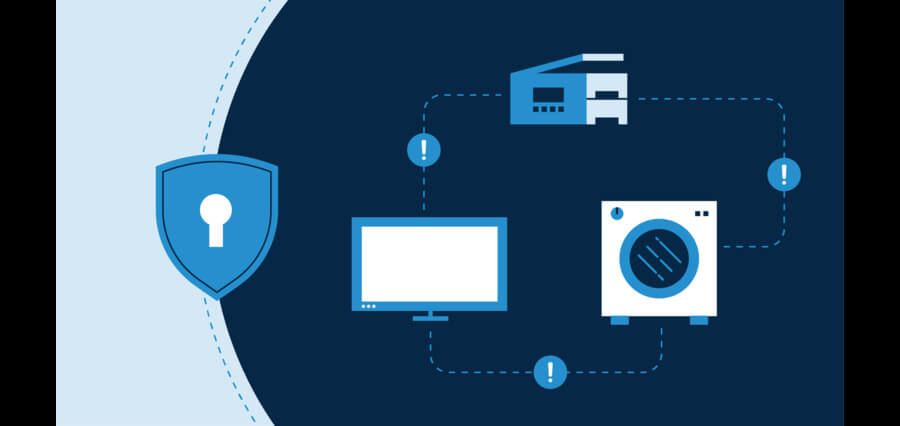Crucial Integration
The Internet of Things (IoT) has revolutionized the way we interact with technology by enabling seamless communication between devices and the internet. From smart homes and connected vehicles to industrial automation and healthcare systems, IoT has found its application in virtually every sector. However, this proliferation of interconnected devices has also introduced a range of security challenges that need to be addressed to ensure the privacy, integrity, and availability of data and services. In this article, we will delve into the fundamentals of IoT security and explore strategies to protect the connected world.
IoT security refers to the set of measures and practices designed to protect the confidentiality, integrity, and availability of data and services in IoT environments. Unlike traditional IT systems, IoT ecosystems often involve a diverse range of devices, protocols, and communication channels, which amplifies the complexity of security concerns. The unique characteristics of IoT necessitate a comprehensive approach to security that encompasses both hardware and software aspects.
Key Fundamentals of IoT Security
Device Authentication and Authorization: Ensuring that only authorized devices can access the IoT network is crucial. Secure authentication mechanisms, such as digital certificates, biometrics, and two-factor authentication, can help prevent unauthorized access.
Data Encryption: Given the sensitive nature of IoT data, it’s essential to encrypt both data at rest and data in transit. Strong encryption protocols like TLS (Transport Layer Security) safeguard data from interception and tampering.
Network Security: IoT networks can be vulnerable to attacks like man-in-the-middle attacks and eavesdropping. Implementing secure communication protocols and regular network monitoring can help detect and prevent these threats.
Firmware and Software Updates: Regular updates are necessary to address vulnerabilities and security flaws in IoT devices. Manufacturers should provide mechanisms for secure and timely firmware and software updates.
Secure Boot and Hardware Security: Ensuring that only authenticated and trusted software can run on IoT devices is vital. Secure boot processes and hardware-based security modules can protect against unauthorized code execution.
Access Control: Implementing fine-grained access controls limits the privileges of users and devices within an IoT ecosystem. This minimizes the potential damage that can be caused by a compromised device.
Security by Design: Building security into IoT devices from the ground up is more effective than trying to retrofit security later. Following best practices like the principle of least privilege and applying the “defense in depth” approach can enhance overall security.
Privacy Concerns: IoT devices often collect vast amounts of personal and sensitive data. Privacy protection measures, such as data anonymization and user consent, are critical to address legal and ethical considerations.
IoT Gateway Security: Gateways that connect IoT devices to the internet can be points of vulnerability. Implementing security measures at the gateway level can help filter and control traffic between devices and the cloud.
Security Monitoring and Incident Response: Continuous monitoring of IoT environments allows for the timely detection of anomalies or breaches. Having a well-defined incident response plan helps mitigate the impact of security incidents.
Blockchain for IoT Security: Consider mentioning the use of blockchain technology to enhance security in IoT ecosystems. Blockchain’s decentralized and tamper-resistant nature can provide a secure way to record and verify transactions and interactions between IoT devices.
Zero Trust Architecture: Explain the concept of zero trust architecture in IoT security. This approach assumes that no device or user should be trusted automatically, requiring continuous verification and validation of all devices and users trying to access the network.
Security Standards and Frameworks: Discuss relevant security standards and frameworks designed for IoT security, such as ISO/IEC 27001, NIST Cybersecurity Framework, and the Industrial Internet Consortium (IIC) Security Framework. These provide guidelines for implementing robust security measures.
Multi-Layer Security: Emphasize the importance of implementing security at multiple layers of the IoT ecosystem. This includes not only the devices themselves but also gateways, cloud services, and user interfaces.
IoT Security Testing: Explain the significance of penetration testing and vulnerability assessments specifically tailored to IoT environments. These tests simulate real-world attacks to identify weaknesses and provide insights into improving security measures.
Regulatory Compliance: Discuss how IoT security aligns with regulatory compliance requirements in various industries, such as healthcare (HIPAA), automotive (ISO 21434), and data protection (GDPR). Meeting these standards is crucial for avoiding legal penalties.
Collaboration in Security: Highlight the need for collaboration among manufacturers, developers, policymakers, and end-users to collectively address IoT security challenges. An ecosystem-wide approach ensures a more robust defense against threats.
Data Lifecycle Management: Address data security throughout its lifecycle, from collection and transmission to storage and disposal. Proper data management practices can mitigate risks associated with unauthorized access or data leakage.
The Bigger Picture
As the Internet of Things continues to reshape our world, the importance of IoT security cannot be overstated. The interconnected nature of IoT devices presents a dynamic landscape of challenges that require comprehensive solutions. From device authentication and encryption to network segmentation and supply chain security, the fundamentals of IoT security demand a holistic and proactive approach. Only through diligent implementation of these strategies can we create a connected world that harnesses the benefits of IoT technology while safeguarding against potential threats.





